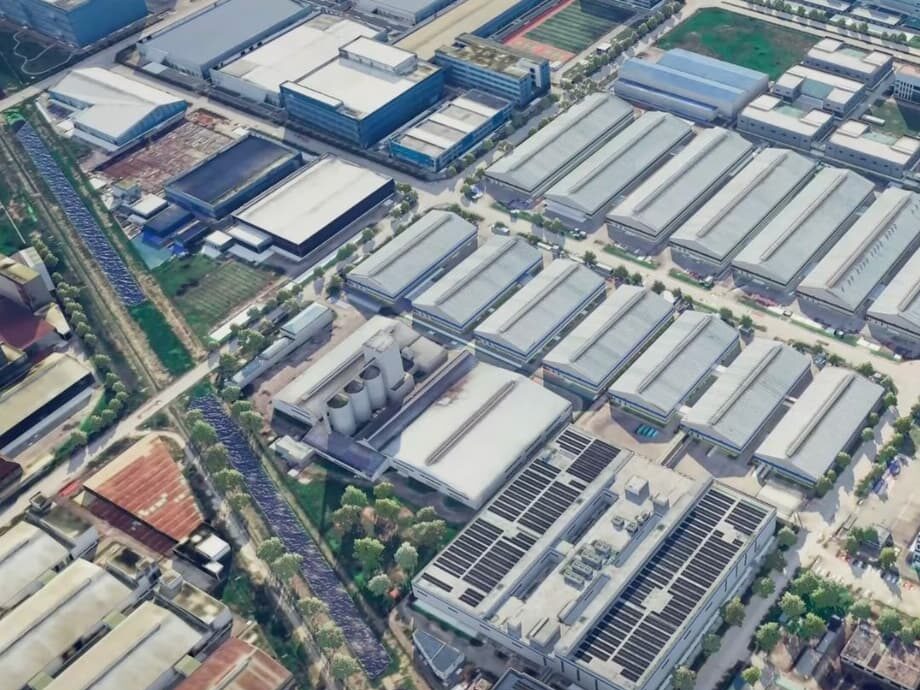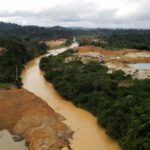A new manufacturing map takes shape
Foxconn, the world’s largest contract electronics maker, is redrawing its footprint. Chair Liu Young-way told attendees at a management forum in Tokyo that companies are moving production away from China and toward regional hubs. Three years ago almost all Foxconn output was in China. Today about 65 percent remains there, with the balance spread across Vietnam, India and Mexico. He said the shift is driven by governments seeking domestic prosperity and by customers that want supply closer to end markets. The company has set up regional headquarters to run local operations and to build ties with policy makers and partners.
- A new manufacturing map takes shape
- Why Foxconn is moving now
- Vietnam, India and Mexico, who gains what
- Can India replace China for iPhones
- How China is responding
- AI reshapes the factory floor and the data center
- Building local roots with policy and partners
- Supply chain risks and resilience
- What this means for consumers and workers
- The Bottom Line
China still anchors Foxconn’s network thanks to unmatched supplier depth, logistics links and a skilled workforce. The new pattern is not a wholesale exit. It is a recalibration to reduce exposure to trade frictions and pandemic scale disruptions, and to meet government and client goals for manufacturing closer to home. The move also reflects a wider trend among global tech brands that now view concentrated production in one country as a single point of failure.
That recalibration has been underway for several years. Foxconn began adding assembly lines in northern Vietnam for products such as tablets and laptops, while stepping up iPhone assembly in India. Mexico is seeing fresh investment to serve North American clients under a nearshoring strategy. The combined effect is a more distributed network that keeps China central, but builds meaningful capacity across multiple countries.
Why Foxconn is moving now
Trade policy, geopolitics and Covid era disruptions pushed diversification from concept to action. Tariffs on made in China electronics raised costs for devices sold in the United States. Export controls and regulatory scrutiny added friction. During 2022, lockdowns and labor unrest at the giant iPhone complex in Zhengzhou, often called iPhone City, highlighted the risk of relying on a single super site. At peak, that complex employed hundreds of thousands of workers and produced the vast majority of Apple’s premium iPhone Pro models.
Major customers encouraged moves. Apple asked assembly partners to locate some iPad and MacBook lines in Vietnam, a milestone because tablets had previously been built only in China. The company also pushed to assemble more iPhones in India to cut risk and respond faster to local market growth. Vendors have explored Mexico to shorten supply routes to the United States and to limit tariff exposure.
Foxconn executives have described a world split into two trade and technology camps. In practice, that means building parallel supply chains that can serve each camp with minimal cross border friction. The approach is costly and complex, yet it is now a central requirement for large electronics brands.
Vietnam, India and Mexico, who gains what
Each destination plays a different role. Vietnam offers speed for consumer electronics with a growing network of suppliers. India brings scale for smartphones and rising policy support. Mexico provides proximity to North America with treaty advantages under USMCA. Together, they form a hedge against shocks in any one country.
Vietnam
Foxconn built new lines in Bac Giang province to assemble iPads and MacBooks, with production starting in 2021. The company also added capacity for televisions and accessories for global brands. Vietnam has drawn a cluster of contract manufacturers that support tablets, phones, game consoles and smart home devices. Wages are lower than in China and industrial parks have expanded fast to meet demand.
The surge has pushed up industrial land prices and tightened labor markets around Hanoi and Ho Chi Minh City. Even so, Vietnam remains attractive for specific product families where the supplier mix can be rebuilt relatively quickly and where final assembly does not require very heavy equipment.
India
India is the centerpiece of the smartphone shift. Foxconn began making iPhones there in 2019, initially for the local market. Output has accelerated. In the year ended March 2024, Apple assembled about 14 billion dollars worth of iPhones in India. By March 2025 that figure rose to roughly 22 billion dollars, supported by incentives that refund part of production costs and by rapid facility expansion in Tamil Nadu and Karnataka.
Industry reports say Apple aims to move the assembly of most iPhones sold in the United States to India by the end of 2026. Tata Group and Foxconn are the main partners, with Pegatron also participating. The goal is to build models for export at scale while continuing to meet domestic demand in India, now one of the world’s largest smartphone markets.
Beyond phones, Foxconn is investing in components. The Indian government cleared a joint venture with HCL to build a display driver chip plant in Uttar Pradesh with an investment of roughly 37 billion rupees. The facility targets volume by 2027 and is designed to produce up to 20,000 wafers and 36 million display driver chips per month. Display drivers sit between the main processor and the screen, controlling how images render. Localizing these chips trims import reliance and shortens lead times.
Mexico
Mexico anchors a nearshoring push for North American clients. Assembly of computers, network gear and consumer electronics from Mexico can cut freight time to US distribution centers from weeks to days. It also reduces exposure to tariffs that affect goods shipped directly from China. Taiwanese contract manufacturers, including Foxconn, have evaluated or expanded sites in border states to support this model.
Can India replace China for iPhones
Replacing China’s depth is a long project. China offers a dense ecosystem of parts makers, tooling shops, logistics hubs and experienced engineers working in a tight geographic radius. That setup allows rapid design changes, tight quality control and emergency ramp ups during peak seasons.
India operates differently. Global manufacturers must coordinate with central ministries, state governments, local officials and landowners. Labor rules and political sensitivities vary by state. Attempts to extend factory shifts have triggered public backlash and quick reversals. Plant managers invest heavily in training to align on work practices and to meet exacting standards for premium phones.
Another thread is access to people and machinery. Reports from late 2024 and early 2025 describe a halt to new rotations of Chinese engineers into India and delays clearing specialized equipment for export from China to India. In response, Foxconn has sent more Taiwanese staff to Indian sites and increased shipments of semi finished iPhones from China for final assembly in India. The workaround keeps lines moving while local teams gain experience.
How China is responding
China remains Foxconn’s base. The majority of assembly still happens there, and the country retains advantages in infrastructure, talent and supplier scale. Wages have risen, but productivity and concentration of know how help offset cost pressures.
Policymakers in Beijing are keen to maintain that leadership. Reports of equipment export delays and reduced cross border technical support point to a more guarded stance toward the transfer of advanced manufacturing skills to strategic rivals. At the same time, China continues to court foreign investment and to promote its own semiconductor and AI ecosystems to move up the value chain.
AI reshapes the factory floor and the data center
Alongside geography, technology is changing how Foxconn works. Chair Liu Young-way told the Tokyo gathering that generative AI can shorten the path from concept to mass production and that its effects will reach every sector.
Generative AI is disruptive and will impact all industries.
Demand for AI computing is stretching data center plans across the tech sector. Microsoft’s chief marketing officer, Takeshi Numoto, addressed concerns about capacity and investment during the same event.
AI demand is growing faster than the internet or cloud did at their peaks.
He said the company is pacing data center spending with customer orders rather than speculative builds.
We are investing in line with demand guided by customer signals.
Foxconn is aligning with that wave. The company has become a leading maker of AI servers and has approved funding for an AI compute cluster and supercomputing center slated for 2025 and 2026. The idea is to move beyond building hardware for others by offering compute capacity directly, often in partnership with chip providers. That shift broadens margins and reduces reliance on smartphone cycles.
The reach of AI into health care and finance also surfaced in Tokyo. Johnson and Johnson chair and chief executive Joaquin Duato described a decade of faster progress in imaging, diagnostics and drug discovery. He said these tools can help turn some cancers into manageable conditions and bring curative therapies closer. Manulife Japan chief executive Ryan Charland added that personal relationships will still anchor financial advice as AI provides better prompts and education for clients.
Together, these voices reflect a wider reset. Supply chains are going regional, and digital tools are compressing development timelines. Foxconn sits at the intersection of both trends.
Building local roots with policy and partners
To make regionalization stick, Foxconn has created headquarters units in key markets to coordinate hiring, compliance and vendor development. Local leadership is essential for public private cooperation, for example on land, power and worker housing.
In India, the display driver chip venture with HCL fits a national push to build a semiconductor ecosystem. Programs provide fiscal support that can cover up to half of approved project costs. Plants like the one planned in Uttar Pradesh, if executed on schedule, help seed component supply near phone assembly lines. That reduces import dependence and cushions against currency swings and shipping delays.
Industry chatter about shifting most US bound iPhone assembly to India by 2026 shows how far plans have advanced. Yet even with strong policy tailwinds and rising exports from India, China will remain an essential partner for parts and tooling for years.
Supply chain risks and resilience
Running parallel production networks is expensive. Companies must duplicate tooling, qualify new suppliers, and build new quality systems. Those moves take time and can weigh on margins in the short term.
Resilience is the payoff. Multiple assembly locations and a broader supplier base reduce the chance that a single lockdown, typhoon or policy change will hit all capacity at once. Nearshoring to Mexico lowers lead times to US retail. Vietnam balances cost and speed for a wide range of electronics. India adds scale with a large labor pool and growing policy support.
These shifts will continue gradually. Industrial parks in Vietnam are filling up. Training pipelines in India must keep growing to support advanced models. Mexico will need continued investments in ports and power to handle larger electronics clusters.
What this means for consumers and workers
For consumers, a more distributed factory network can smooth product availability during peak seasons. It also spreads risk across borders. At the same time, tariffs and supply duplication can raise costs, so companies are chasing efficiency gains through automation and better planning to keep prices steady.
For workers, new plants in Vietnam, India and Mexico bring jobs in assembly, logistics and component making. Training will be a major focus, from precision soldering and optical inspection to factory software. Worker safety and consistent standards are part of the equation after the stresses seen in China during the pandemic.
The Bottom Line
- Foxconn now keeps about 65 percent of production in China, with the rest in Vietnam, India and Mexico.
- Tariffs, geopolitics and pandemic disruptions are driving diversification of manufacturing.
- Apple pushed for new Vietnam lines for iPads and MacBooks and is expanding iPhone assembly in India.
- India assembled roughly 22 billion dollars of iPhones in the year to March 2025 as exports grew.
- Reports describe delays sending engineers and equipment from China to India, adding near term friction.
- Foxconn and HCL plan a display driver chip plant in Uttar Pradesh, targeting output by 2027.
- Generative AI is shaping product development and factory operations, with rising demand for compute.
- Foxconn approved investment in an AI compute cluster for 2025 to 2026, expanding beyond hardware assembly.
- Regional headquarters and local partnerships are central to making new production hubs work.
- Consumers may see steadier supply, while jobs and training rise in Vietnam, India and Mexico.




